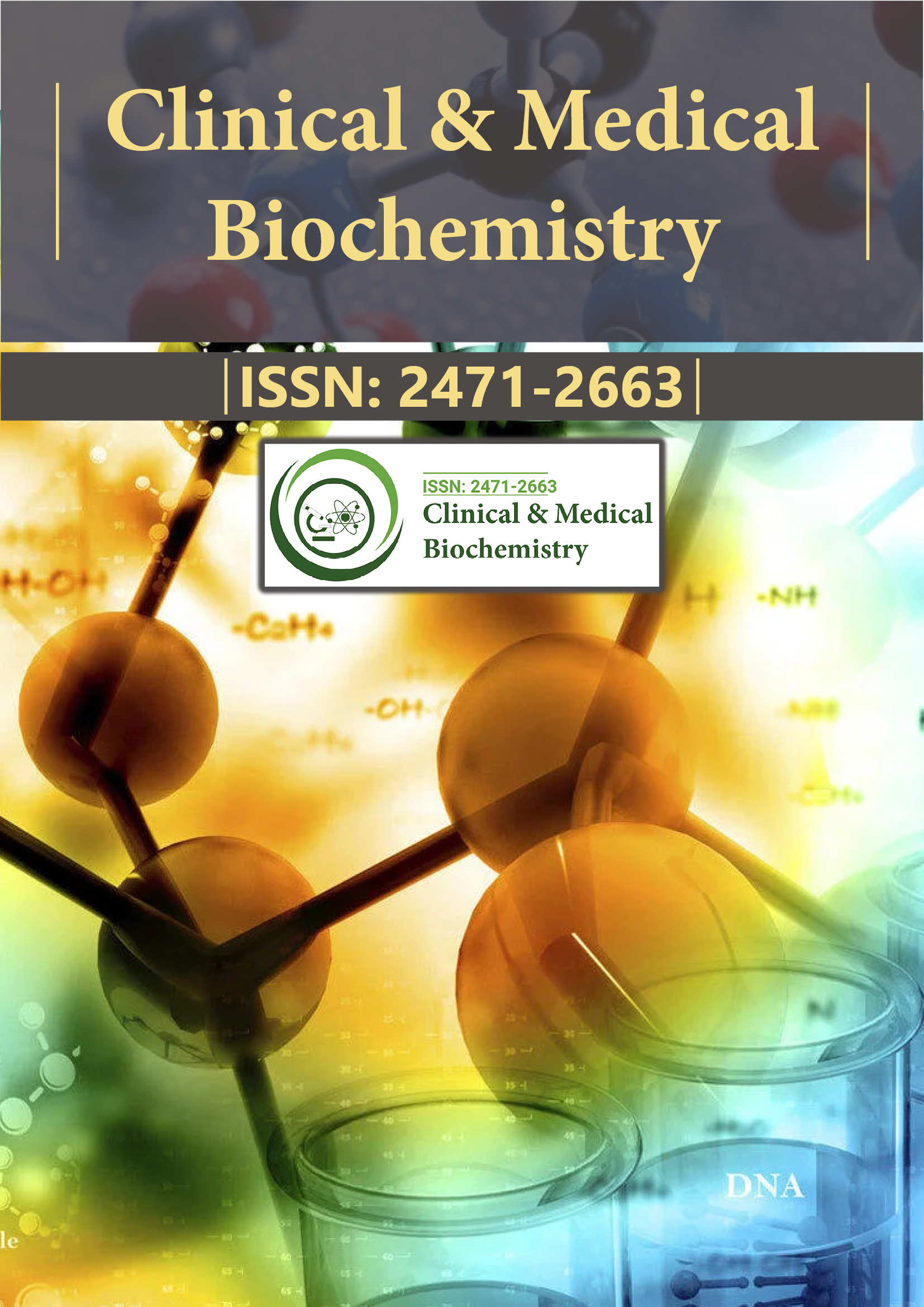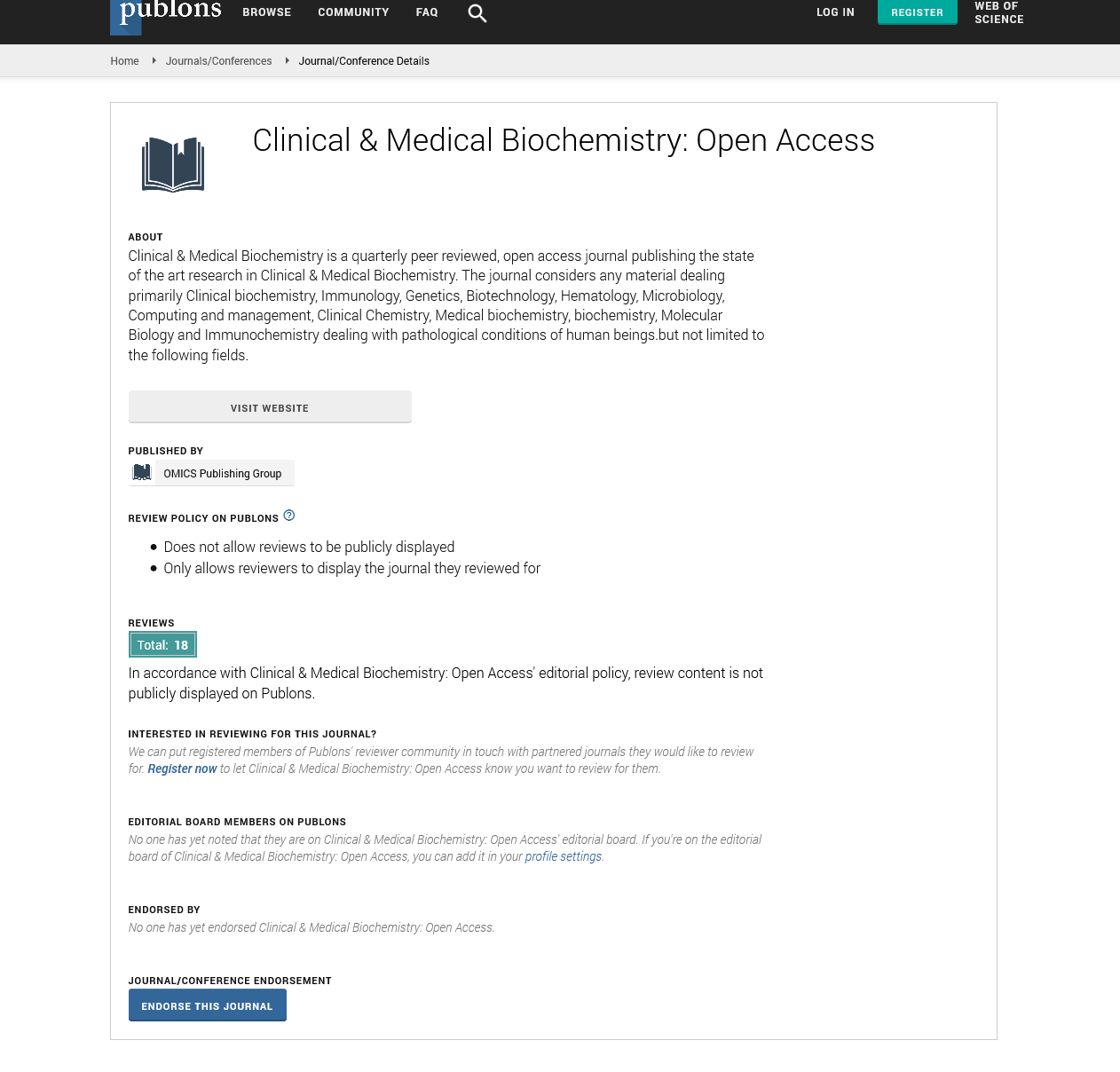Indexed In
- RefSeek
- Directory of Research Journal Indexing (DRJI)
- Hamdard University
- EBSCO A-Z
- OCLC- WorldCat
- Scholarsteer
- Publons
- Euro Pub
- Google Scholar
Useful Links
Share This Page
Journal Flyer

Open Access Journals
- Agri and Aquaculture
- Biochemistry
- Bioinformatics & Systems Biology
- Business & Management
- Chemistry
- Clinical Sciences
- Engineering
- Food & Nutrition
- General Science
- Genetics & Molecular Biology
- Immunology & Microbiology
- Medical Sciences
- Neuroscience & Psychology
- Nursing & Health Care
- Pharmaceutical Sciences
Commentary - (2023) Volume 9, Issue 5
Genomic Techniques in Liver Disease Diagnosis and Management
Christian Ndungu*Received: 01-Sep-2023, Manuscript No. CMBO-23-23193; Editor assigned: 04-Sep-2023, Pre QC No. CMBO-23-23193 (PQ); Reviewed: 18-Sep-2023, QC No. CMBO-23-23193; Revised: 25-Sep-2023, Manuscript No. CMBO-23-23193 (R); Published: 02-Oct-2023, DOI: 10.35841/2471-2663.23.9.191
Description
Liver diseases encompass a diverse spectrum of disorders, ranging from viral hepatitis and alcoholic liver disease to genetic and autoimmune conditions. These disorders cause a significant global health burden, with liver-related morbidity and mortality on the rise. In the search for better diagnostic tools and more targeted therapies, the application of advanced genomic techniques such as exome sequencing has emerged as a potential method. Exome sequencing, which focuses on the proteincoding regions of the genome, has the potential to solve the genetic bases of liver diseases in adults, leading to more precise diagnosis and management strategies. Liver diseases represent a major public health concern globally. According to the World Health Organization (WHO), liver diseases, including viral hepatitis, alcoholic liver disease, Non-Alcoholic Fatty Liver Disease (NAFLD), and liver cancer, contribute to millions of deaths annually. While viral hepatitis accounts for a substantial portion of liver-related morbidity, other liver disorders, including those of genetic and autoimmune origin, play a significant role in the overall burden of liver diseases.
Many liver diseases exhibit non-specific symptoms, such as fatigue, abdominal discomfort, and jaundice. This often leads to delayed or missed diagnoses, as these symptoms can do various other conditions. Liver diseases have diverse etiologies, including viral infections, alcohol abuse, metabolic disorders, and autoimmune responses. Accurate diagnosis relies on identifying the underlying cause, which can be challenging. Traditional diagnostic methods often require invasive procedures, such as liver biopsies, to assess liver tissue histology. These procedures carry risks and are not always useful for all patients. Treatment options for liver diseases can be limited, especially for advanced stages of the disease. Liver transplantation remains the definitive treatment for end-stage liver disease. Patients with liver diseases may respond differently to therapies due to variations in disease etiology and genetic factors.It takes an immense amount of work to adapt therapy for specific people. The approach of nextgeneration sequencing technologies has transformed the field of genomics, enabling the cost-effective and rapid sequencing of entire genomes or specific portions of the genome, such as the exome.
The exome represents the protein-coding regions of the genome, where most disease-causing mutations are located. Exome sequencing has become a powerful tool for identifying genetic variants associated with various diseases, including liver disorders in adults. Some liver diseases, such as hereditary hemochromatosis, Wilson disease, and alpha-1 antitrypsin deficiency, are caused by single gene mutations. Exome sequencing can pinpoint these causal mutations. Even complex liver diseases like NAFLD and alcoholic liver disease have genetic components that contribute to disease susceptibility and progression. Exome sequencing can discover genetic risk factors and pathways involved in these diseases. Identifying specific genetic mutations associated with liver diseases allows for the development of targeted therapies.
For instance, individuals with hereditary hemochromatosis can benefit from therapeutic phlebotomy to reduce iron overload. Genetic information can help predict disease progression and assess the risk of complications, enabling early intervention and personalized treatment plans. The integration of exome sequencing into the diagnosis and management of liver diseases in adults holds great promise for transforming patient care. Exome sequencing can quickly identify genetic variants associated with liver diseases, expediting diagnosis and allowing for early intervention. Exome sequencing helps distinguish between liver diseases with similar clinical presentations, ensuring accurate diagnoses. Treatment changes based on the patient's genetic profile can optimize therapeutic outcomes, minimize adverse effects, and reduce healthcare costs. Knowledge of disease-causing genetic mutations can guide the development of new drugs and targeted therapies for liver diseases. Genetic information can predict the risk of disease progression, allowing for proactive monitoring and intervention.
Identifying genetic mutations in affected individuals can prompt screening of at-risk family members, facilitating early detection and preventive measures. While exome sequencing has a significant amount of potential, several challenges and considerations must be addressed to realize its full potential in liver disease diagnosis and management. Exome sequencing can be expensive, and its widespread adoption may be limited by cost considerations. Ensuring equitable access to exome sequencing for all patients, regardless of socioeconomic status, is critical. Not all genetic variants identified through exome sequencing have known clinical significance, causing challenges in variant interpretation. The disclosure of genetic information to patients raises ethical and psychological considerations, including the potential for psychological distress. Healthcare providers need training and education on the interpretation of genetic data and its integration into clinical decision-making. Managing large volumes of genomic data and ensuring patient data security are critical considerations.
Conclusion
Exome sequencing represents a powerful tool for advancing the diagnosis and management of liver diseases in adults. As our understanding of the genetic basis of these diseases continues to expand, exome sequencing will play an increasingly important role in clinical practice. To realize the full potential of genomics in liver disease care, it is essential to address challenges related to cost, accessibility, variant interpretation, and ethical considerations.
Citation: Ndungu C (2023) Genomic Techniques in Liver Disease Diagnosis and Management. Clin Med Bio Chem. 9:191.
Copyright: © 2023 Ndungu C. This is an open-access article distributed under the terms of the Creative Commons Attribution License, which permits unrestricted use, distribution, and reproduction in any medium, provided the original author and source are credited.

